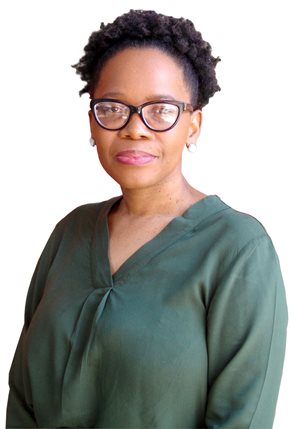The International Energy Agency (IEA) recently released a report detailing a way forward for countries looking to achieve net-zero emissions by 2050. However, the recommended path would be a tough one for South Africa to follow, considering the country's heavy reliance on coal.

Lethabo Manamela, interim CEO of Sanedi
“Given the current South African coal-dominated electricity generation context, the IEA milestone targets will prove a lot more difficult to achieve than most other countries,” says Lethabo Manamela, interim CEO of the South African National Energy Development Institute (Sanedi). Among others, the report, Net Zero by 2050: A roadmap for the global energy sector, recommends that by 2030, all sub-critical coal‐fired power plants must be phased out and by 2050, global coal use must be 90% lower than in 2020.
However, Manamela adds that there is reason for hope. “Recent signals from the state president, together with the Department of Mineral Resources and Energy (DMRE), other government ministries, Eskom and the private sector, show a clear commitment by all the major decision-makers to achieve this target.” She adds that this, however, must take place within a just energy transition (JET) framework, which appears to be gaining a lot of momentum in the country and is sure to be a big focus of the upcoming United Nations Climate Change Conference (COP26).
Considering SA's socioeconomic landscape
The JET is crucial for South Africa’s sustainable and inclusive move towards cleaner energy practices. In this regard, last year saw the formation of the Presidential Climate Commission (PCC), which is mandated to coordinate and oversee the transition towards a low-carbon economy and society which considers our unique socioeconomic landscape.
“The socioeconomic situation in South Africa brings with it both a number of challenges, but also a lot of opportunities. That is why the emphasis placed on JET in South Africa is so important. The ‘new’ opportunities brought about by a transition to newer, more modern and clean technologies provide with it the opportunity to introduce many more innovative skills into the economy, which will go a long way in reducing the high unemployment levels, especially amongst the youth, and it can potentially get the economy moving in the right direction,” says Manamela. She adds that South Africa has many ‘good news’ initiatives in place to report on at COP26.
For example, phase two of the carbon tax, due for implementation at the beginning of 2023, will see a radically different carbon pricing regime that will accelerate the transition to a low carbon economy. Added to that, there is the envisaged growth in the hydrogen economy which, if successful, could see a major shift in the local energy landscape in the medium term. In addition, Sanedi has been involved in the implementation of the recently gazetted regulations on energy performance certificates (EPCs) for buildings, which will see building owners prioritising their energy efficiency initiatives in the coming years. Finally, President Cyril Ramaphosa’s increase in the licence threshold for people to generate power from 1MW to 100MW is another step in the right direction.
“While the road to net-zero is sure to be a challenge for South Africa, we are up for this challenge. With many initiatives already in place, there is reason for hope as we work together to combat climate change. Sanedi looks forward to continuing its work in transforming our local energy sector to one which is sustainable, reliable and economically inclusive,” Manamela concludes.


















